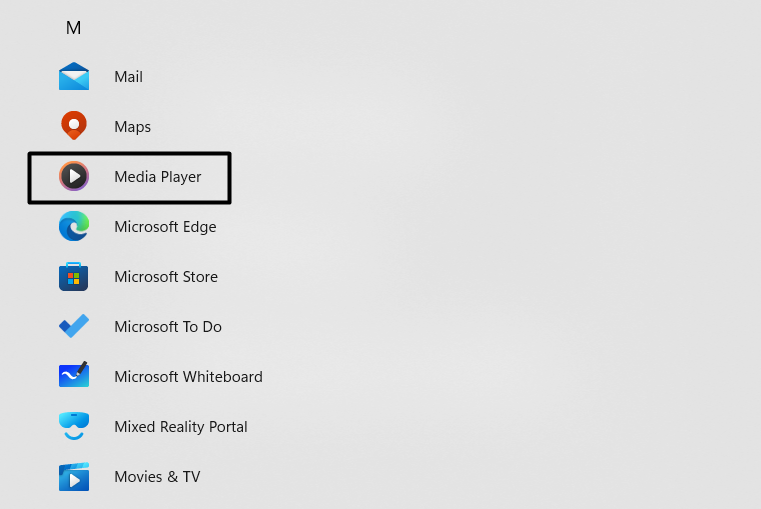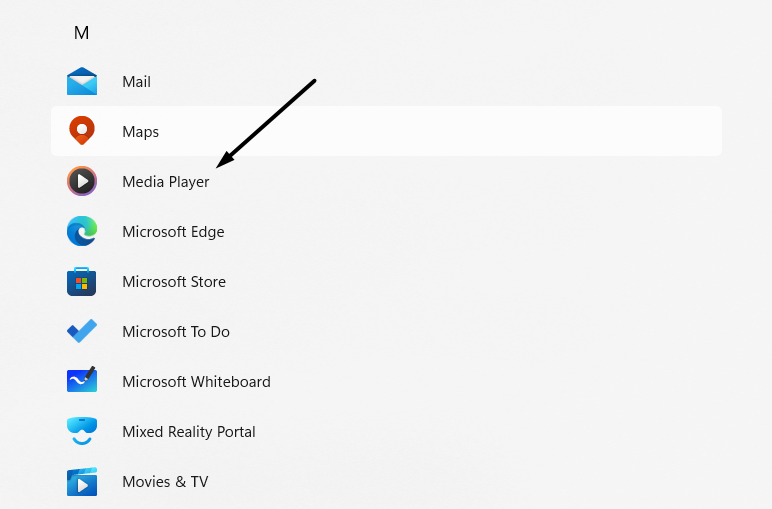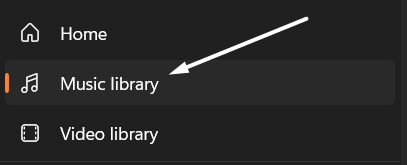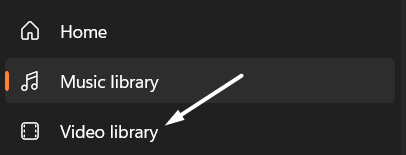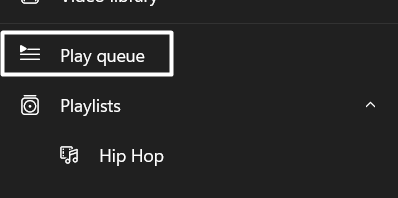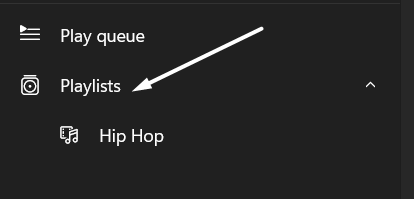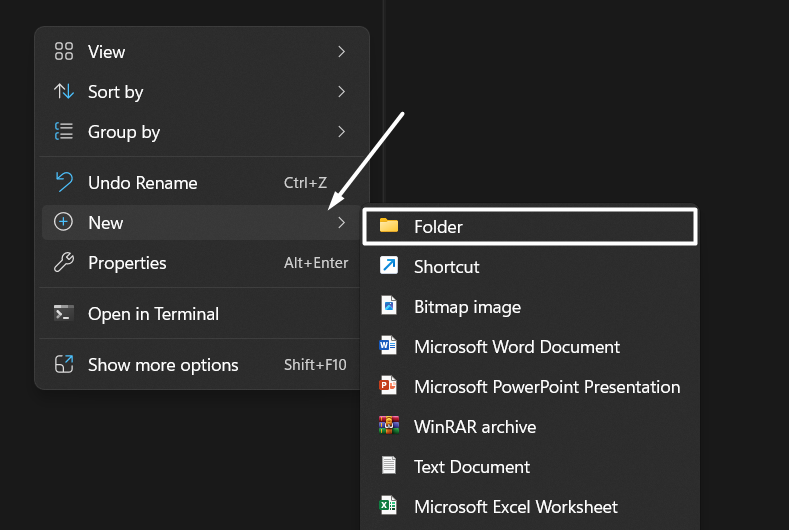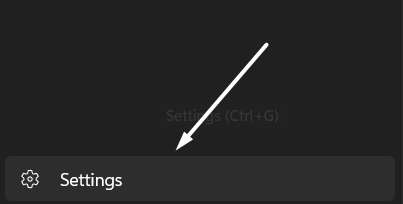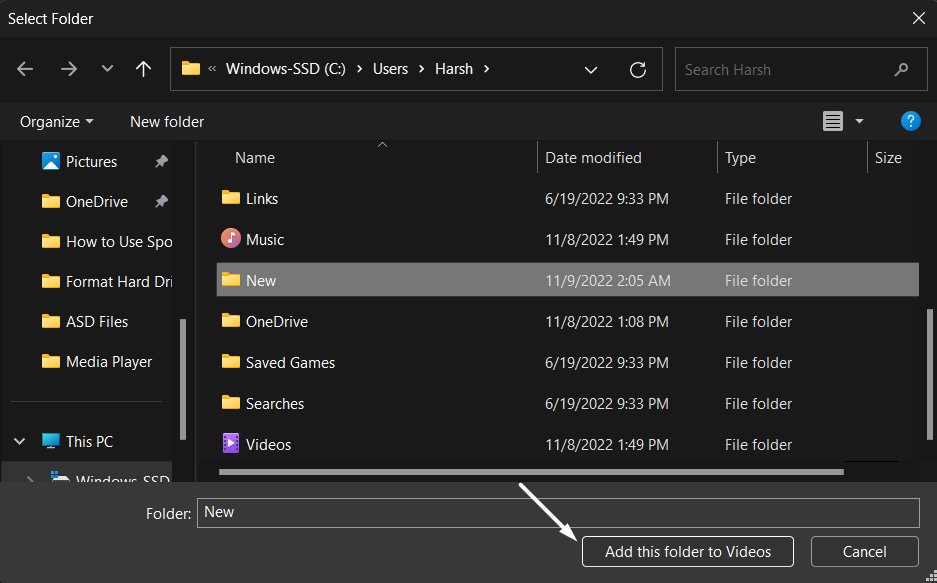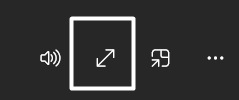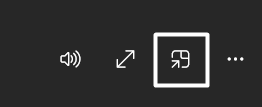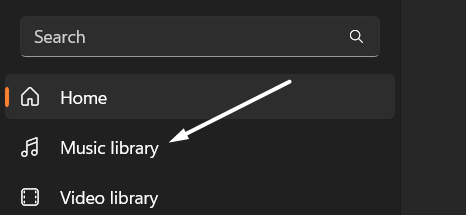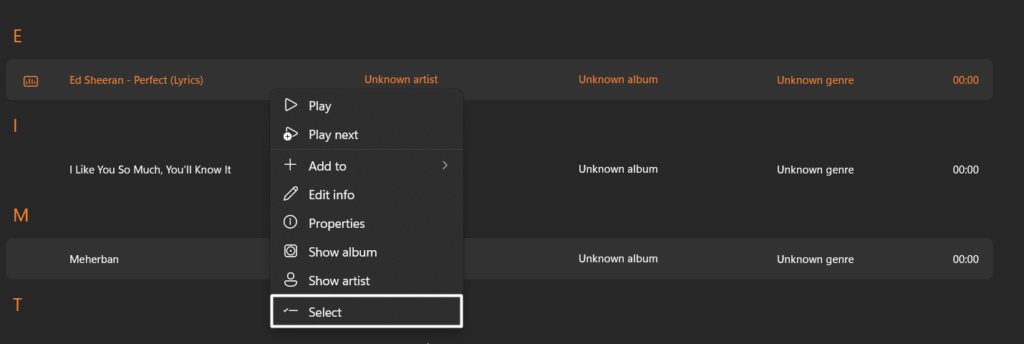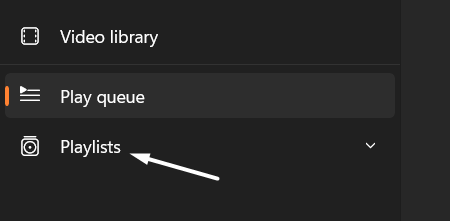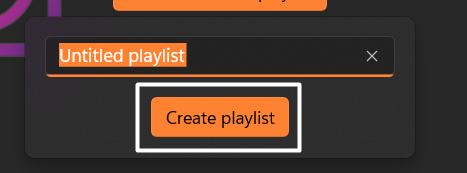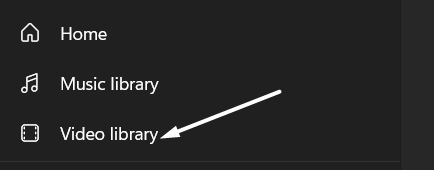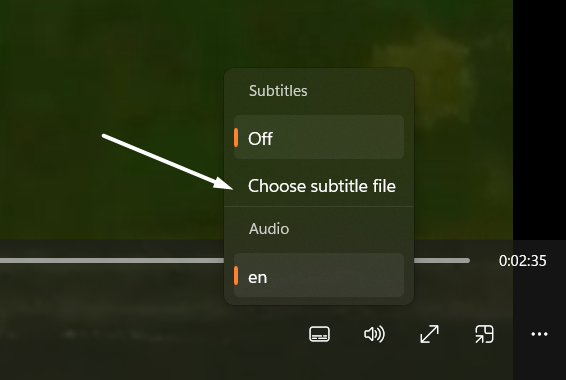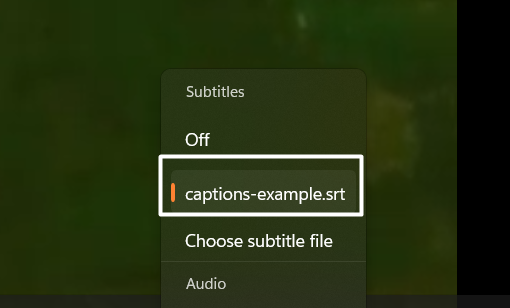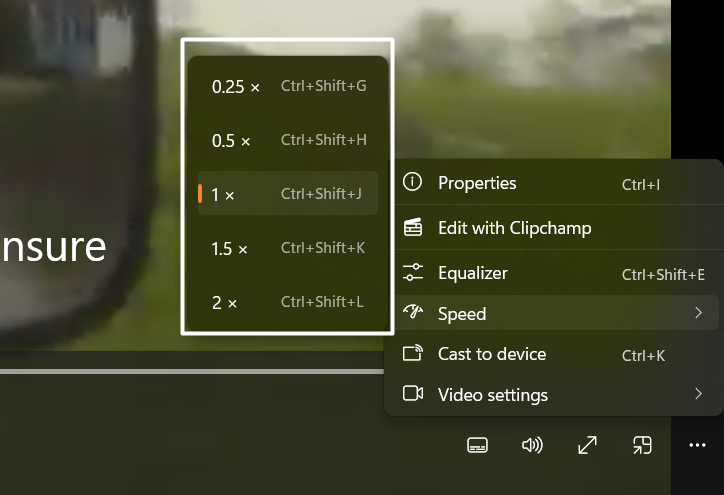Due to this, they’re searching for a detailed guide that can walk them through all the options in the Media Player app in a simple manner. And guess what? We did it! In this guide, we’ve explained all the features and options of the newly launched Media Player app in detail. It explains everything you should know about the new Media Player in Windows 11.
How To Open Media Player In Windows 11
There are two ways to open the Media Player app in Windows 11. In this section, we’ve demonstrated all two ways in detail with screenshots to make it easier to understand. You can use any of the below-mentioned methods and open the new Media Player on your Windows 11 PC.
1. Using Windows Search Box
The first way to launch the Media Player app on a Windows 11 PC is by using the Windows Search Box. You need to search for the program in the Search Box, and it’ll appear in the search results. Here are the steps to do the same with ease:
- Open the Windows Search Box by clicking on the Magnifying Glass icon in the taskbar or using the Windows + S keyboard shortcut.
- Next, type Media Player in the Windows Search Box and press the Enter key to search for the program on the PC.
- Select Media Player from the Best match section to open the Media Player app on your Windows 11 PC.
2. From Windows Start Menu
The second way to open the Media Player app in Windows 11 is through the Windows Start Menu. You can open the Start Menu and search for the Media Player in the All Apps section. Here are the steps that demonstrate the same:
- To start, click on the Windows Start Button in the taskbar and then click on All apps to see all the apps installed on the PC.
- Now, scroll down to the ‘M’ alphabet to view all the apps starting with the letter ‘M’ on the system. Then, search for the Media Player app in the section.
- Lastly, click on Media Player in the M alphabet section to launch the Media Player application on your Windows 11 system.
Media Player’s Left-Sidebar Explained
Once you launch the Media Player app on your Windows 11 PC, you’ll see a sidebar on the left side of the window. There will be five options in the left sidebar: Home, Music library, Video library, Play queue, and Playlists. It’s essential to know the uses of these options because these will help a lot while using the Media Player app. Here in this section, we’ve given a brief introduction to all the options. So, read ahead. Search Bar: The first option you get in the left sidebar is the Search Bar. You can use the Search Bar to quickly find the song, videos, or playlist you want to listen to. This way, you won’t need to search for the songs or playlists manually. To access the search bar, simply click on it or use the Ctrl + E keyboard shortcut to open it. Home: If you select the Home option from the left sidebar, you’ll be sent to the Home section of the Media Player program. In the Home section, you’ll see all the clips and tracks you recently played using the app. You can also move to the Home section of the program using the Ctrl + Shift + F keyboard shortcut. Music Library: When you click on the Music library option in the left sidebar, it shows all the songs you’ve added to the Media Player app. You can play any track by clicking on the song title or the Play button. Also another simple and easy way to move to the Music section is by using the Ctrl + R shortcut key. Video Library: In the Video Library section, the app shows all the videos you’ve imported into the Media Player app. To play a video from the Video Library section, hover the arrow on the video card, and click on the Play button. That’s it. You can also proceed to the Video Library section from the Ctrl + D keyboard shortcut. Play Queue: Like all media players, the Media Player app lets us add tracks to the queue for continuous listening. This section shows all the songs that will play next after the current track. You can move to the Play queue section by using the Ctrl + Q key combination or selecting Play queue from the left sidebar. Playlists: The new Media Player app lets you create playlists for all your moods and hear them anytime. You will see all your existing playlists in the Playlists section. To play any playlist, move to the Playlists section and click on the Play button. It can be accessed from the left sidebar and the Ctrl + Y keyboard shortcut.
How To Play Songs & Videos in the new Media Player App in Windows 11
To play tracks and videos using the Media Player app, you must first import the media into the app. For that, you can create a new folder and add all songs and videos to that newly created folder. Once the folder is created, you need to ask the Media Player app to fetch content from it and show it in the app. Here are the steps to do the same:
- Open the File Explorer program on your Windows 11 PC and select the storage drive from the left navigation pane.
- Now, double-click on the Users folder and then double-click on the User Profile to see all the data related to the user profile.
- Next, right-click on the black space, hover the arrow on the New option, and then select Folder from the context menu.
- Once done, name the folder and move all the media content to that folder. Note: You can include both videos and songs in the new folder.
- After that, open the Media Player app and move to the Settings section by clicking on the Settings option in the bottom left corner of the window.
- Now, click on the Add folder option next to Music library locations and select the folder you created in Step 4.
- Finally, click on the Add folder and select the same folder you selected in Step 6. You’ll now see all the tracks and videos in the respective sections.
How To Sort Songs in the New Media Player App?
You must have now added tons of songs to the Media Player app. If you want to find a particular song from a huge list of tracks, you can use the Sorting option. The Sorting option in the Media Player app lets you easily find a particular song by applying some filters. You can sort songs by album name, artist, release year, etc. Follow the below-mentioned steps to learn how to sort songs in the Media Player app:
- First, open the Media Player app on your Windows 11 PC and move to the Music section by selecting the Music library option from the left sidebar.
- Now, click on the upside-down arrow next to Sort By and select how you want to sort tracks. You’ll see various options, such as A -Z, Artist, Album, Release year, and Date added.
Windows 11 Media Player’s Playing Bar Explained
You’ve now learned to add songs and videos to the Media Player app. When you play a video or song in the Media Player app, it’ll start showing the same in the Playing Bar at the bottom. The most important option in the Playing Bar is the Play/Pause option which lets us pause and play the running video or song. But, besides this, it has a lot more options. Some of them are self-explanatory, while some require a detailed explanation. In this section, we’ve explained all the options present in the Playing Bar in detail. Shuffle: The first option you’ll find on the left side of the Playing Bar is Shuffle. This option lets you play songs in a randomized order. If it’s disabled, the tracks and videos will play in the same order as they are displayed in the Music section. You can enable/disable this option using the Ctrl + H key combination. Previous: Next to the Shuffle option, you get the Previous option. The Previous option lets you play the track you heard before the current track again. Additionally, you can return to the previous song using the Ctrl + B keyboard shortcut. Skip Back 10 Seconds: First, enter the Full-screen mode by pressing the F11 key to see this option in the Playing Bar. You can use this option to rewind 10 seconds of the video or the song. Play/Pause: The Play/Pause option in the Playing Bar lets you stop and pause the song or video whenever you want. You can also do the same using the Ctrl + P keyboard combination. Skip Forward 30 Seconds: You need again to enter the Full-screen mode to get this option in the Playing Bar. This option lets you move 30 seconds forward of the video or song. You can also move forward using the Ctrl + Right keyboard shortcut. Next: You can use the Next option to play the next song in the queue. Another easy way to move to the next track is using the Ctrl + F keyboard shortcut. Repeat: If you like to listen to your favorite songs on the loop, you get an option for that too in the Media Player app. You can use the Repeat option to play the same song on repeat. This option can also be enabled/disabled using the Ctrl + R keyboard shortcut. Language & subtitles: The Language & subtitles option in the Playing Bar lets you enable/disable the subtitles of the video. You can also change the language by clicking on this option. Also, this option will only be visible at the time of watching the video. Otherwise, the option won’t be clickable. Volume: You can use the Volume option to level up and down the volume of the currently playing video or song. Simply click on the Volume icon in the Playing Bar, and a volume bar will pop up. You can drag the pointer to the right to increase the volume and to the left to decrease it. Full screen: You can enter the Full screen mode by pressing the F11 key on the keyboard. Once you enter Full-screen mode, the Media Player app’s tab size will increase, and the taskbar will hide automatically. Mini player: The Media players app also lets you listen to songs and watch videos in the Picture-in-Picture (PiP) mode. It’s similar to YouTube’s Picture-in-Picture mode. If you click on Mini Player, the video or song will start playing in the small pop-up. You can move the pop-up to any part of the screen by simply dragging it. More Options: At the right end of the Playing Bar, you’ll see the More Options or three dots. Once you click on three dots, it’ll show some additional options, like Properties, Edit with Clipchamp, Equalizer, Speed, Cast to device, Video settings, etc. So these are all the options you’ll find in the Playing Bar, and this was the basic introduction to all the options.
How To Add & Remove Songs From the Play Queue in the Media Player App
The Media Player app also lets us add songs to the queue that we want to listen to next. This way, we can personalize our listening experience according to our current mood. You can read this to know how you can add or remove songs from the Play queue in the Media Player app.
Add Songs in the Play Queue in the Media Player App:
- To start, open the Media Player app on your Windows 11 PC, and navigate to the Music library section from the left navigation pane.
- At last, right-click on the song you want to add to the queue and select Play next from the dropdown menu. Tip: If you want to add multiple songs to the Play queue, choose Select from the right-click menu and then tick the checkboxes next to the songs you want to add to the queue. At last, click on Play Next in the top menu bar to add them to the queue.
Remove Songs From the Play Queue in the Media Player App:
First, move to the Play queue section from the left sidebar and select the song(s) you want to remove from the line by ticking the checkbox next to them. Once done, click on the Clear option at the top bar to remove the songs from the queue. Tip: You can clear all the songs at once from the Play queue by clicking on the Clear option in the top menu bar. In this case, you don’t need to select any song.
How To Create a New Playlist & Add Songs to It?
When you open the Media Player app, you’ll see a Playlists option in the left sidebar. You can easily create a new playlist and delete existing ones from the Playlists section. We suggest reading this section to check the steps to create a new playlist for your new mood.
Create a New Playlist in the Media Player App
- Open the Media Player program and move to the Playlists section from the left sidebar to view existing playlists and create new ones.
- Now, click on Create a new playlist button and name the playlist whatever you want. Tip: You can also rename the playlist later by selecting the Rename option from the right-click menu.
- Next, click the Create playlist button, and once you do this, the new playlist will appear in the Playlists section.
- After that, move to the Music library section and right-click on the track you want to add to the new playlist.
- At last, hover the arrow on the Add to option and select the playlist in which playlist you want to add this song.
Delete an Existing Playlist in the Media Player App:
- Head to the Playlists section from the left navigation menu and right-click on the playlist you want to delete.
- Lastly, select Delete from the dropdown menu to immediately delete the playlist from the app. Note: You can’t recover the playlist after deleting it. So, double-check the playlist before deleting it to ensure you’re deleting the right one.
How To Add & Enable Subtitles in the Media Player app?
If you want to watch videos with subtitles in the Media Player, you get an option for that. You need to download the videos’ subtitle files on your PC and add it to the Media Player app. Once done, select the subtitle files in the Media Player app and watch videos freely with subtitles. It’s easy to do, and the below-mentioned steps explain the same:
- First, open the Media Player app, move to the Video library section, and play the movie or video you want to watch with subtitles.
- Once the video starts playing, click on the Language & subtitles option in the Playing Bar to open the menu.
- Now, select the Choose subtitle file option from the sub-menu, and choose the subtitle file from the system’s storage.
- Then, head back to the Media Player app, click on Language & subtitles in the Playing Bar, and then select the subtitle file you added in Step 3. You can now watch videos with subtitles. Are you able to watch videos with subtitles now?
How To Control the Playback Speed of Music & Video?
It’s impossible to understand Eminem’s Rap God song lyrics in one go. Right? This is why the playback speed option is introduced in the world of multimedia players. Using the playback speed option, we can listen to music or watch videos at a faster speed as well as a slower speed. Fortunately, the Windows 11 Media Player also allows us to control the playback speed. You can follow the below-mentioned steps to increase or decrease the playback speed of a video or a song in the Media Player app:
- Open the new Windows 11 Media Player app on your Windows 11 PC, and play a video or song by moving to the respective sections.
- Next, click on the three dots at the bottom right corner of the window and select Speed from the dropdown menu.
- Lastly, select the playback speed you want to apply to the video or music from the available options. You can consume content with the speed of a snail at 0.25x and as fast as the speed of light at 2x. The choice is yours. You can now consume content at your preferred playback speed.
How To Access Sound Equalizer in Windows 11 Media Player?
If you like listening to tracks with extra treble, base, etc., then it’s possible with the Windows Media Player. The new Windows 11 Media Player comes with a built-in Equalizer that lets you change the sound presets according to your music taste. For example, you can choose whether you want to listen to music with extra bass or less bass. So, follow the mentioned steps to turn on the Equalizer in the Media Player app and use it:
- Launch the Media Player app on your Windows 11 PC and play any song or video from the Music library or Video library.
- Now, click on More Options or three dots at the right end of the Playing Bar, and select the Equalizer option from the menu.
- Next, click on the toggle in the Equalizer window to enable the built-in Equalizer. Once the Equalizer is enabled, you can choose from the variety of available presents, such as Flat, Treble boost, Bass boost, etc. Are you enjoying the integrated Equalizer in the new Media Player? We’re loving it so much.
How To Customize the Media Player App’s User Interface?
Like Groove Music, Microsoft has also added some customization options to the Media Player app that let users customize the look and feel of the app according to their preferences. For instance, they can change the theme of the app, the color scheme of the app, etc. You can also customize the Media Player according to your preferences by following the below-mentioned steps:
- First, open the Media Player app on your system, and click on Settings at the bottom left corner of the screen to move to the Settings section.
- In the Settings tab, you’ll see two options under the Personalization section: App theme and Accent color.
- Click on App Theme to customize the app theme. For instance, you can select whether to keep the app interface Dark, Light or as per the System settings. You can choose according to your vibe and design preferences.
- Next, click on Accent color to change the app’s color theme. By default, it would be set to Zest (default color scheme). But you can set it to Use System setting to match it with your system’s color theme. You’ve now given a new look to your new Media Player app. Keep listening to your favorite music with a new vibe.
Windows 11 Media Player Shortcuts
Here in this section, we’ve mentioned some keyboard shortcuts that you can use while using the Media Player app. These shortcuts will help you perform certain tasks within seconds, such as changing the playback speed, enabling Full screen mode, etc. You can check the shortcuts below:
Is There a Media Player in Windows 11?
The new Windows 11 comes with a new multimedia player app called Media Player. It comes with an easy-to-use interface and all the essential features.
Is VLC Media Player Compatible With Windows 11?
Yes, the VLC Media Player is compatible with the latest Windows 11. But you need to get it from a third-party website as it isn’t available on Microsoft’s official website.
Is Windows Media Player a Free Download?
Yes, the Windows Media Player is free to download for all users. You can download it from Microsoft’s official website and install it on your system.
How Do I Get Windows Media Player?
You can download the Windows Media Player from Microsoft’s official website and install it on your Windows system. It’s available for all versions of Windows, including the old ones.
We Finally Did It!
Was it difficult to use the new Media Player app? No. Right? The new Media Player comes with an intuitive interface that makes it easy to use, even for beginners. In addition, it comes with the right quantity of features, which neither makes it too overwhelming nor less useful. Here in this guide, we tried to give an overview of all its features and options in an easy manner. We hope this guide helped you learn more about the new Media Player app. Do let us know which part of this guide was most helpful for you.




